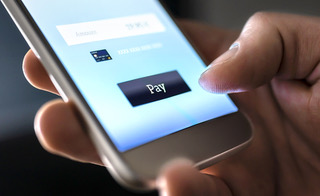
The first money laundering activities to run through mobile apps took place over ten years ago when 20 of the top 25 downloaded applications in the Danish Apple App Store were downloaded from China and cost between $50 and $100 each. The laundering activity was fairly simple. Criminals created the apps, and used stolen gift cards and credit cards to buy their own products.
App money laundering has advanced over the years. In 2018, criminals were caught using free gaming apps to launder money. The scheme was simple. It centered around three games: Clash of Clans, Clash Royale, and Marvel Contest of Champions. They would download the free app, use stolen credit cards for in-game purchases, and sell the fully loaded app to players who didn’t want to spend the time developing their player or building up their repository of tools.
Since 2018, money laundering has continued to thrive through mobile applications. It presents a perfect environment for stealing and cleaning money. Applications and mobile payments are lightly regulated, and in-app purchases for thousands of dollars don’t necessarily raise an eyebrow. Furthermore, applications allow gift card purchases, which are even less regulated than credit card payments. Here are a few ways criminals are laundering money.
Peer-to-Peer Laundering
Airbnb and Uber have revolutionized their industries. Without owning a single property or car, these companies rank among the largest hospitality and transportation companies in the world. Consumers use the apps to book rooms and rides, while criminals use them to easily launder money and move funds across borders.
Fake stays in expensive Airbnbs are an easy way to launder money. Using a stolen credit card, the money is sent to the host, giving off the appearance of a legitimate transaction. Fake reviews are the final touch in making the stay look legitimate.
Uber can facilitate transactions in a similar way. Criminals book rides that never happen with stolen credit cards, giving the driver a cut of the transaction and taking the rest of the laundered funds.
Laundering COVID Relief Money
Recently, governments around the world have spent billions of dollars in COVID relief. In the United States, the CARES Act allocated over 2 billion dollars in direct payments to citizens, unemployment benefits, loans to major industries, and loans to small businesses. In an effort to get money into the hands of people who needed it, the government made it quick and easy.
Criminals falsified applications to receive checks and quickly deposited them into “money mule” accounts. From there, it was easy to transfer the money into popular mobile applications and move the money around. When the cash arrived in the hands of the criminals, it was clean and could be used for anything.
Chinese Money Laundering App
Earlier this year, the Indian police in Delhi busted an elaborate money laundering scheme based in China that managed to steal nearly 20-million dollars from half a million Indian citizens over just a few months. Criminals recruited Indians citizens through messaging applications WhatsApp and Telegram, offering them great returns on investments.
Investors were told to use PowerBank, Sun Factory, and EzPlan apps, and asked to invest small sums of money. Those investments paid off, and investors were encouraged to invest larger sums of money. The apps used notifications and other messaging tools to motivate investors to invite friends and family to invest as well.
Once a large investment was deposited, the investor was blocked from the app, and the money was transferred through 25 different shell companies and bank accounts. To build out the shell companies, the criminals randomly approached people through WeChat, DingTalk, and Telegram and asked them to open the companies in exchange
The scheme was so popular that Power Bank trended as at number 4 on the Google Play store in India.
A Serious Problem
For law enforcement officials and financial regulators, the ease with which criminals can hide dirty money within a legitimate transaction is deeply troubling. Global retail ecommerce sales are expected to top 2.2 trillion dollars, creating a far greater place for criminals to hide and clean their ill-gotten gains.
Technology continues to simplify money laundering for criminals. Rather than relying on manual processes to create accounts and move money, they can develop automated programming tools to generate new user accounts, makes purchases, and scale up their illicit activities.
To combat these trends, law enforcement and regulators need to utilize AI-based digital transaction monitoring tools that are capable of recognizing anomalous behavior. For example, while a single Airbnb room rental may seem completely harmless, a tool looking for anomalies might notice trends over time, such as overlapping stays or prices that are out of line with the market.
These anomalies could raise a red flag, and help investigators find criminal enterprises that were flying beneath the radar.
